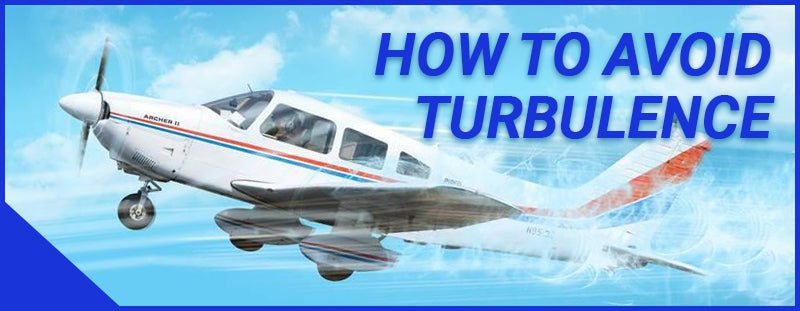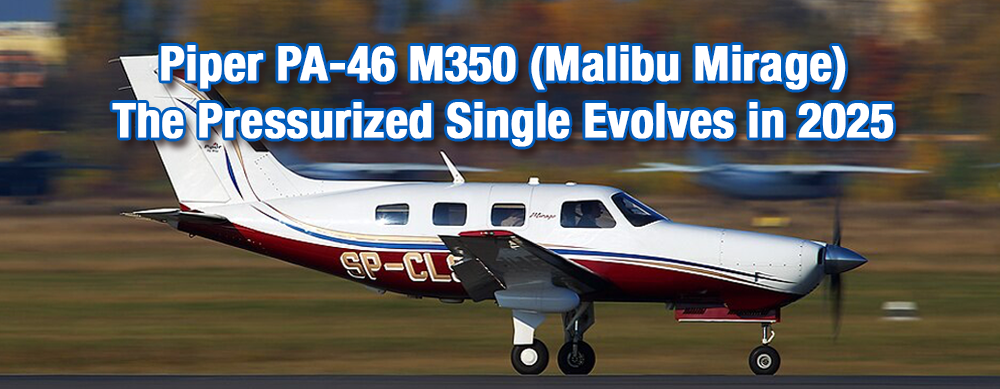What do airline pilots and limo drivers have in common? Both do everything possible to give their passengers a smooth ride. While limo drivers are busy avoiding potholes in the streets, we pilots do our best to skirt invisible bumps in the sky.
That’s why today we’re covering turbulence, including the different types, causes, and severities plus how turbulence impacts aircraft and what we can do to avoid the bumps or smooth out a rough ride.
Ready to get started? Here’s to clearer skies ahead.

What is Airplane Turbulence?
Weather.gov defines turbulence as “an irregular motion of the air resulting from eddies and vertical currents.”
What Causes Turbulence?
Turbulence can be caused by many things including warm or cold weather fronts, wind shear, thunderstorms, the jet stream, air around mountains, and atmospheric pressure.
What Happens to a Plane During Turbulence?
Airplanes maintain straight, level, controlled flight when the air flowing over and around the wings is smooth and undisturbed. The eddies and vertical air currents of turbulence change that airflow and can cause pitching about the lateral axis, rolling about the longitudinal axis, or yawing about the vertical axis depending on the direction and severity of the current shift.
Types of Turbulence
There is more than one type of turbulence, and each type is named for where you encounter it or what causes it. The main types of turbulence pilots experience are:
Clear Air Turbulence
The stealthiest and most unexpected type of turbulence is the one that catches pilots and passengers by surprise. Clear air turbulence is generated by strong wind shears in the jet stream and is more common during winter months.
Unlike many other types of turbulence, clean air turbulence occurs without warning and in clear, cloud-free air above 15,000 feet. Pilots usually can fly out of clear air turbulence by ascending or descending a few thousand feet.
Frontal Turbulence
When two air masses collide, expect the unstable air between the two fronts to contain turbulence. Frontal turbulence is common alongside fast-moving cold fronts, but it can also be found in the moist air of a warm front, especially if that warm front is building into a thunderstorm.
The danger is not avoided simply by going around the clouds, either. Updrafts and downdrafts can extend as much as fifteen to thirty miles from severe thunderstorms.
Mechanical Turbulence
Mechanical turbulence is rough air caused by friction between the air and the ground, terrain features, or man-made structures. Surface winds over 20 knots, rough terrain, and unstable air temperatures all increase the chances of significant pockets of turbulence developing.
The most severe mechanical turbulence is found in the mountains where eddies known as mountain waves form up to several hundred miles downwind from the mountain ranges. These strong updrafts and downdrafts can cause an aircraft to gain or lose up to 5,000 feet of altitude per minute.
Mountain flying takes special skill, and pilots who fly in mountainous areas study and even carry a mountain flying guide to help them anticipate, manage, and when possible, avoid mountain turbulence. In fact, when you review the list of fatal Part 91 turbulence crashes, you will notice many have happened in the mountains.
Thermal Turbulence
Thermal turbulence is also known as convective turbulence since it is caused by the isolated convective currents of warm air rising and cooler air descending.
Thermal turbulence is most common on hot summer days when dark colored rocky, sandy, and urban areas heat up more rapidly than lighter areas like bodies of water, grassy parks, and fields. The resulting temperature differences cause fluctuating air currents. Distinctive cloud formations often mark areas of significant thermal turbulence.
Wake Turbulence
If you’re flying a small, light aircraft, be extra careful when taking off behind, landing after, or crossing the path of bigger planes. The wingtip vortices created by other aircraft can linger in the airspace up to three minutes. If you cross that path before the vortices dissipate, you will be affected by the disturbed air.
The strongest wingtip vortices are generally created by heavy, clean, slow-moving planes (although the mid-sized Boeing 747 also produces very strong wake turbulence unless it is retrofit with vortex-reducing winglets). Always keep plenty of separation between yourself and a larger, heavier aircraft.
Wind Shear Turbulence
Rapid, pronounced changes in wind speed and/or direction over a certain vertical or horizontal distance generate an often-severe type of turbulence called wind shear. Wind shear is most common around the jet stream, along troughs and lows, and in areas of temperature inversions.
Is Turbulence Dangerous?
One of the first questions new passengers ask when they first experience significant turbulence is, “Are we going to crash?” As pilots, we are used to dealing with our fair share of rough skies, but for first timers, the experience can be intimidating. So, what do the numbers say about the dangers of turbulence?
The good news for commercial passengers is that according to the FAA turbulence records, from 1980-2008 there were just 234 turbulence related accidents which resulted in 298 serious injuries and three fatalities.
Remind your nervous passengers to put their seatbelts on, because at least two of those three reported fatalities were passengers who were not wearing their seat belts even though the seat belt sign was illuminated.
The NTSB has reported an additional 334 turbulence-related incidents or accidents since 2008. Of those, 40 resulted in fatalities. General aviation accounted for 35 of the 40 fatal accidents, and none of the 5 remaining fatal crashes occurred on a commercial airline.
In fact, there have been no Part 121 turbulence-related fatalities since 2008. Reports show just five minor injury incidents and 140 serious injury accidents.
First time fliers and those who want to better understand what is happening when the aircraft starts shimmying around can benefit from watching American Airline pilot Stuart Walker’s easy to understand description of turbulence. He also shares tips for how to experience the smoothest ride on your next flight.
General statistics aside, the danger level of turbulence depends on multiple factors like:
- Type of aircraft
- Pilot’s training and experience level
- Altitude
- Proximity to terrain features, man-made obstacles, and other aircraft
- Intensity level of the turbulence
For example, a smaller aircraft flown by an inexperienced pilot who encounters extreme turbulence at low altitude, close to a mountain range is in much more danger than a large commercial airline jet flown by a seasoned career pilot who encounters light turbulence at a high altitude clear of obstacles.
Categories of Turbulence
Turbulence is classified and reported in levels based on its degree of intensity.
· Level 1 Turbulence: Light
The slight, momentary changes to aircraft altitude and attitude during light turbulence are not a danger to either the aircraft or the people on board.
· Level 2 Turbulence: Moderate
During encounters with moderate turbulence, there will be noticeable changes to aircraft altitude and/or attitude as well as indicated airspeed, but pilots will still be able to maintain positive control. Food and beverage service are difficult to continue in moderate turbulence.
· Level 3 Turbulence: Severe
Severe turbulence causes sudden and significant changes in altitude and/or attitude. The indicated airspeed will also vary widely. Momentary loss of flight control may occur in pockets of severe turbulence. Food and beverage service is impossible and dangerous during severe turbulence.
· Level 4 Turbulence: Extreme
Extreme turbulence is the most intense and dangerous category. Aircraft, particularly smaller aircraft, caught in severe turbulence can be violently tossed around and be challenging to control. Structural damage is possible, though still unlikely, because of severe turbulence.
Can Turbulence Bring Down a Plane?
Saying that turbulence can’t cause a plane to crash is like the ship designers saying an iceberg couldn’t sink the Titanic. The odds are slim, they aren’t zero.
Light turbulence will cause nothing more than a few bumps and the need to turn on the fasten seatbelt sign aboard commercial airline flights, but extreme turbulence can cause loss of control or in rare instances, even structural damage.
A plane that is structurally damaged by turbulence or an aircraft that loses control close to the ground or other terrain, could technically crash, but turbulence-related airplane crashes are thankfully very rare with modern aircraft.
One of the most recent Part 91 fatal airplane crashes caused by turbulence was a Cirrus SR22 in December 2021. The Cirrus pilot lost lift and the aircraft rolled inverted then crashed when it crossed the wake of an Airbus A320 while on short final.
To study and learn from the thirty-one other Part 91 turbulence-related fatality accidents, run an NTSB CAROL query. Set “event category” condition to “turbulence,” “highest injury level” to “fatal,” and “FAR part” to “Part 91: General Aviation.”
The most notable recent fatal passenger airliner crash involving turbulence occurred in November 2001 when American Airlines flight 587, an Airbus A300, intersected the wake turbulence of Japan Air Lines flight 47 (a Boeing 747-400) during their initial takeoff climb out of JFK Airport in New York.
The NTSB report on Flight 587 indicates that the separation of the vertical stabilizer which ultimately led to a loss of control and the fatal crash, was “a result of the loads beyond ultimate design that were created by the first officer’s unnecessary and excessive rudder pedal inputs.”
Thus, the crash of flight 587 is coded as “pilot error” because the investigators determined the crash could have been avoided had the first officer who was flying the plane responded differently to the turbulence-induced temporary loss of handling control.
How to Avoid Turbulence
There are turbulence avoidance strategies and tools you can use for each type of turbulence.
How to Deal with Turbulence as a Pilot
Tools to Help Predict and Identify Turbulence
You aren’t on your own when dealing with turbulence identification. Use these tools to help predict and identify when you might run into turbulence:
- PIREPs
- G-AIRMETs/SIGMETs
- Graphical Turbulence Guidance (GTG)
- Weather charts
- Radar summaries
- Winds and Temperatures Aloft Chart
- Other Pilots and ATC
Additionally, it's important to understand AIRMETs and SIGMETs and how to find information regarding them,
How to Avoid Clear Air Turbulence
Clear air turbulence is tough to avoid, although depending on your aircraft, you can use information from the tools above to help predict and divert around known areas of turbulence.
Since clear air turbulence is very isolated, skirting known turbulent areas is doable by descending or climbing just a few thousand feet into clean air.
How to Avoid Frontal Turbulence
Your G-AIRMETs/SIGMETs, GTG, weather charts, radar summaries, and other tools will all help identify fronts. Listen for pilots ahead of you reporting frontal turbulence via PIREPs.
Also watch your cloud formations. Cumulus and cumulonimbus clouds often form around cold fronts. Nimbostratus clouds are the most common near warm fronts, although cumulonimbus and other types of clouds can also form there.
How to Avoid Mechanical Turbulence
Mountain waves are one of the most distinctive types of mechanical turbulence. Weather.gov’s turbulence training resource for pilots shares the below list of “watch out” scenarios that create conditions favorable to mountain wave development.
Watch out for mountain wave mechanical turbulence under the following conditions:
- Winds 25 knots or greater, blowing perpendicular to the top of the mountain ridge
- Little change of wind direction with height
- Wind speeds increasing with height
- Stable atmosphere
You can also look for distinctive cloud formations that indicate an increased likelihood for mountain wave turbulence. Cirrocumulus Standing Lenticular (CCSL), Altocumulus Standing Lenticular (ACSL), and rotor clouds (often associated with the most intense turbulence) are all indicators of mechanical turbulence near mountains.
How to Avoid Thermal Turbulence
When flying during hot summer days, plan your flights for early morning if possible. Flying in the early morning or evening can decrease your odds of encountering thermal turbulence.
For the smoothest daytime ride on a hot summer day, skirt around large patches of dark terrain unless you want to go for a vertical ride in a thermal lift.
How to Avoid Wake Turbulence
Avoid wake turbulence by flying far enough behind other aircraft. Adhere to the ATC spacing buffer, especially when taking off or landing behind a “heavy” or “super” aircraft.
Pilots can also avoid wake turbulence by flying above, below, or to the side of the path taken by other planes while at cruise altitude.
- When Landing
To avoid the effects of wake turbulence, stay above the flight path of the larger aircraft on its approach and land past its touchdown point.
- When Taking Off
When taking off, make sure to rotate your aircraft before the point at which the preceding one did so. Additionally, it's important to maneuver your aircraft in a way that avoids the flight path of the preceding aircraft to avoid any turbulence.
- During Flight
If during the course of your flight you see a large/heavy aircraft flying above you with only a 1000ft vertical separation, you can request with ATC to adjust your heading to the side of the path taken by the heavier aircraft.
How to Avoid Wind Shear Turbulence
Keep an eye on the winds aloft chart for your flight path. If you start noticing rapidly changing windspeeds and directions, consider transitioning to a different flight level or skirting around the rough patch.
What to Do if You Can’t Fly Around Turbulence
Clear air turbulence can appear seemingly out of nowhere as your position to the jet stream changes, you will cross mountains eventually, and there’s not much you can do about mechanical turbulence caused by buildings and trees near your airfield.
Clearly there are times when avoiding turbulence just isn’t possible. So, what is a pilot to do?
- First, if you need to fly through turbulence, make sure everyone on board is in their seat and buckled up.
- Slow to slightly below maneuvering speed. Target a speed of two-thirds the way between the clean stall speed and the maneuvering speed.
- If you encounter turbulence on your landing, maintain positive control of the aircraft by flying a power-on approach. The FAA recommends you add half the wind gust factor to your final approach speed.
- Avoid over controlling. Use gentle control inputs instead to avoid applying excessing maneuvering loads, or G-forces to your flight controls.
- When caught in a down-draft, focus on maintaining attitude rather than altitude.
- In an up-draft, maintain airspeed.

|
ASA Aviation WeatherAll pilots deal with weather. They must learn to appreciate good weather; to recognize and respect marginal or hazardous weather; and to avoid violent weather. Recognizing these weather patterns and making the appropriate decisions are critical to the successful outcome of all flights. This book discusses each aspect of weather as it relates to aircraft operation and flight safety. |
Your next reads for smooth flying
-
7 Types of Turbulence Every Pilot Should Know (What Causes It)
- Cloud Ceilings: What Pilots Should Know (Complete Guide)
It’s your turn
What is the most extreme level of turbulence you have encountered either as a pilot or passenger? As a pilot, what steps do you take to avoid turbulence and how do you deal with it when you can’t avoid a rough ride?





















1 comment
Harry Waddingham
I’m looking at going travelling in a years time but I’m worried about the turbulence when flying and want to get it sorted before I do the long fly’s? Was wondering if I could get this sorted and ear popping thanks Harry